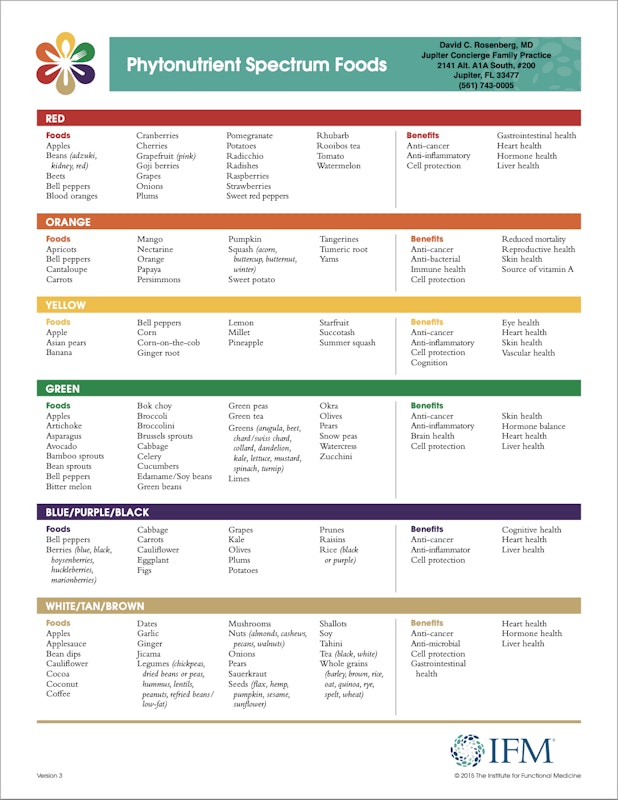
If you’re somewhere around 50, you may have noticed that things… have changed. Age 50 is a sort of gateway into a different stage of body functioning. It’s a pivotal time, and within it there’s news. Good and bad.
First, the bad news is that after 50, anything unhealthy you do can and will be held against you. The body has less buffer, less tolerance for nonsense. It will let you know, in no uncertain terms, that you are not in your 30s anymore.
The good news is that your body will tell you what you can and can’t do. It won’t leave you guessing in your 50s. And there’s still a lot you can do for your health after 50!
Let’s take a look at how you got here and where to go next to achieve and maintain good health after 50.
How Did You Get Where You Are Now?
When we’re younger, our bodies are very forgiving when we overindulge or make poor choices. We have systems in place to correct problems that arise, often without our ever noticing anything is wrong.
As we get older, the cumulative choices we’ve made over the previous decades begin to bear noticeable fruit. Our 50-something immune systems aren’t as robust, and they feel (and show!) the results of how we’ve managed our nutrition, exercise, sleep, and stress over the years. We see the consequences of our lifelong choices — the good and the bad.
For example, keeping up a level of exercise throughout life makes maintaining health after 50 much easier. Our aging bodies are mechanically less forgiving, and we have a higher likelihood of injury, and a slower recovery, especially when we’re starting from scratch. Worse still, the consequent limited activity more quickly results in reduced fitness and further inactivity, exacerbating other medical problems.
The Continuum That Leads To Disease or Health After 50
I describe the distance between health and disease as a continuum. If healthy is on one end of the spectrum, disease is on the other. But there’s a long journey of dysfunction in between these two endpoints, and it rarely involves any discernable warning signs. Those don’t often appear until disease sets in.
If we wait to act until disease shows up, we miss opportunities to reverse course and move back toward health. But if we can make corrections along the way, we can often change the destination. In functional medicine, we test for dysfunction before disease occurs so we can make these timely corrections.
If you don’t detect dysfunction, then you don’t know anything needs to change. You carry on with life, unaware that dysfunction is building up over years and decades. And around age 50, diseases start showing up.
How To Reach or Maintain Optimal Health After 50
Let’s say you’re around 50, and you become my patient. The first step of care is to assess — via various metrics — your current state of health.
Once we know where you are, we’ll talk about your goals. What do you want from your life? Are you interested in changing your entire lifestyle to achieve peak health after 50? Or do you simply want to be able to play with your grandkids?
Some people want to play competitive hockey at 60, and others just want to go for a stroll in the park. Whatever it is you want to do, we’ll talk about that. Then we’ll outline how to get there.
We’ll design a plan within each of what I call the four pillars of health…
The Four Pillars of Health
- Nutrition.
- Exercise.
- Sleep.
- Stress.
Let’s unpack these four pillars and look at what, why, and how they contribute to optimal health after 50.
Nutrition
Ideally, you should eat 7–10 servings of various colorful fruits and vegetables per day. That might sound impossible, but with a little planning and forethought, it’s doable. Check out this chart to help with your meal planning.

Why the varied colors? The colors, also called carotenoids, represent different nutrients. For example, the orange in a carrot is beta carotene, while the red carotenoid in a tomato is lycopene.
In other words, when you vary the colors, you vary your nutrient intake. This is essential because good nutrition requires a combination of many nutrients.
Exercise
Having an established exercise routine is one of the single most important things you can do for your health after 50. Of equal importance is to undertake exercise, especially new exercise, with caution and awareness.
People in their 50s need to be cautious in order to minimize the possibility of injury. Fortunately, exercise does not exclusively entail running marathons. There are many types of exercise for people at every level of fitness. Walking is an excellent example.
Like with nutrition, a healthy exercise regimen requires a combination of elements. When I work with patients to develop an individualized plan, we look at these four areas:
Cardio-Respiratory
Aerobic activity builds stamina and strength for the heart and lungs, and it’s a great way to warm up for other types of exercise. Aim for 30 minutes of cardio-respiratory exercise three days per week. This could be something as simple as walking 1.5 miles in 30 minutes (which is a 3mph pace).
Muscle Tone
This is your good old-fashioned weight lifting or weight-bearing exercise. General recommendations include 20 minutes of activity, three days per week. Remember, too, that this doesn’t have to be barbells and bench-pressing; it could be walking or calisthenics.
Stretching
Stretching is crucial for keeping ligaments and muscles pliant and free from damage. Stretch large muscle groups for 10 minutes each day to prevent injury and soreness.
Balance
When we’re young, we don’t notice our balance and don’t consider it in our exercise routines. As we age, however, our balance declines, our risk of falls increases, and our ability to heal from falls weakens.
Five minutes of safe balance-enhancing exercise each day builds resilience. Simple balancing poses like “tree pose” in yoga can enhance stability and bring greater sturdiness to your stride.
Sleep
The human body needs adequate rest in order to function optimally. When we sleep, our bodies are repairing from the day’s wear and tear. Appropriate sleep aids our immune system, digestion, and brain function. Think of it as a daily hard drive defrag, where everything gets put back into its proper place.
Most people need between 7 and 10 hours of sleep each night. There are many ways to support quality sleep, but here are a few of my favorite tips:
Create a Sleep Sanctuary
Give your bedroom an appraising look and optimize it for sleep with these points in mind:
- Sleep in complete darkness, or as close to it as possible.
- Keep the temperature in your bedroom at 70° F or below.
- Move alarm clocks and other electronics away from the bed.
- Avoid using loud alarm clocks.
- Reserve your bed for sleeping and intimacy. When you treat your sleeping area as a sanctuary, you train your nervous system to switch into calm mode.
- Consider separate bedrooms if your partner is a restless sleeper or snores.
Cue Yourself To Sleep
You can train your body to relax and reboot with your actions, too. Give yourself an evening routine that you enjoy to help your sleep become more predictable. For example, try some of these strategies:
- Go to bed by 10 p.m. each night.
- Stop all work an hour (or two!) before lights out.
- Stop streaming your favorite show before your eyelids droop — TV stimulates the brain and delays sleep.
- Have a high-protein snack a few hours before bed.
- Take a hot shower right before bed.
Stress
There’s a lot of talk about stress management these days, but I take a different approach. I prefer stress elimination.
When we manage stress, we allow it a greater presence in our lives than it deserves. While some stressors are unavoidable, many are highly avoidable. Let’s look at how to eliminate the stress we can, and how to handle what we can’t eliminate.
Thinking in the following categories is a helpful way to assess and eliminate stressors:
Emotional/Spiritual Stress
These are stressors we know cause us anxiety — associating with negative people or having unrealistic expectations, for example. Wherever you can, modify any expectation, environment, or relationship that causes you undue stress.
Food/Physical Environment Stress
Toxins in our diets and environments have a cumulative effect on our minds and bodies. Convenience foods, allergens, chemicals, and pollution are available at every turn. Refuse the pollutants you can, being mindful about what you introduce into your body.
Instead of sugar, dairy, and gluten, try to eat more fruits, vegetables, and healthy proteins. Sticking to the outer edges of the grocery store versus the aisles can help you make healthy food selections.
Hidden Stressors
As you turn your attention to eliminating the stressors in your life, you may find that you unearth problems you didn’t know were there. Think of these stressors as programs running in the background that clog up your overall performance and functioning.
They may be emotional or environmental stressors you had sublimated as a form of “management,” and that you can dismiss from your life now that you’re aware they exist.
Or they may be diseases or illnesses you didn’t know you had. Through testing, functional medicine can uncover these burdens and help mitigate their effects.
After you’ve barred as many stressors as you reasonably can, consider introducing a meditation practice to handle the rest. Meditation is a form of mental waste elimination, and it’s a formidable stress-buster.
In just three minutes each day, you can improve your quality of life and overall health with meditation. You don’t need a special place or a floor cushion to meditate — though if those sound appealing to you, go for it. These additional tips may help as well:
- Choose a place that’s comfortable, whether that involves sitting, lying, standing, or walking.
- Choose a place where you’re unlikely to be interrupted.
- Focus by breathing deeply.
- Be kind to yourself and accept whatever happens in your meditation.
- Pay attention to how each part of your body feels.
- After you finish, reflect on how you feel.
There is no one right way to meditate. The important thing is to find what works for you.
Health After 50 Isn’t Built in a Day
People often overestimate what they can accomplish in a day and underestimate what they can accomplish in a year. Achieving and maintaining health after 50 is an incremental process. Do a little bit each day, and you’ll be surprised how far your health comes in a year.

Dr. David Rosenberg
Dr. Rosenberg is a board-certified Family Physician. He received his medical degree from the University of Miami in 1988 and completed his residency in Family Medicine at The Washington Hospital in Washington, Pennsylvania in 1991. After practicing Emergency Medicine at Palm Beach Gardens Medical Center for two years, he started private practice in Jupiter, in 1993. He is an avid baseball fan and Beatles fanatic, since he was 8 years old. He has been married to his wife, Mary, since 1985 and has three grown children.
David completed additional studies at Mercer University, Macon, Georgia and obtained a BS in Chemistry in 1983.
“My interests include tennis, snow skiing, Pilates and self-development.”

Subscribe to our Newsletter!
Receive latest blog posts, health tips, and exclusive offers from Jupiter Concierge Family Practice straight to your inbox.
